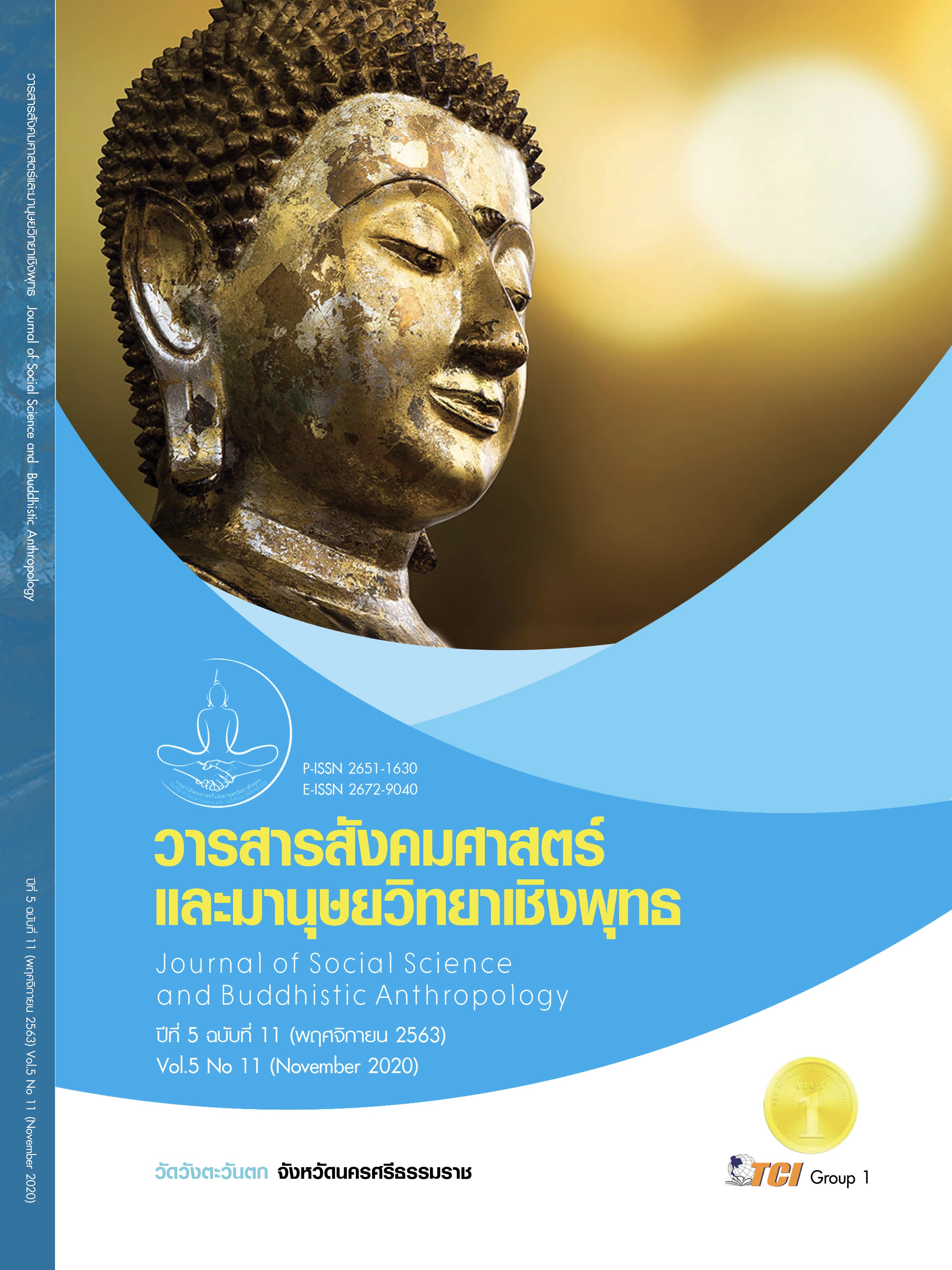ANALYSIS AND COMPARISON OF TOURISM STRATEGIES CHANGES OF PUBLIC TOURISM CITIES IN THE LAO PEOPLE'S DEMOCRATIC REPUBLIC XISHUANGBANNA AND THAILAND
Keywords:
Strategy, Tourism, The Lao People's Democratic Republic, Xishuangbanna, ThailandAbstract
This article has an objective for study the context of tourism strategies, tourism routes and factors affecting tourism of The Lao People's Democratic Republic, Xishuangbanna and Thailand. Qualitative research methods were used together with analyzing relevant documents. Also, Non - participant observation was used for data collection. Then the data collected from 18 key informants were analyzed and tested by Triangulation method. The data were presented using descriptive analysis. The research found that; 1) Factors affecting tourism of The Lao People's Democratic Republic, Xishuangbanna and Thailand. After analyzed, Xishuangbanna and Thailand have similar characteristics. However, the management by the Chinese government is more decisive and unity than Thailand. Benefits are distributed thoroughly to benefit the people equally and systematically. On the other hands, The Lao People's Democratic Republic management is inferior to the other two countries, but in terms of preserving the arts and culture of the people in each tourist destination, they still stand out in terms of arts and culture of the indigenous people which are more outstanding than Thailand and Xishuangbanna. 2) Data Analysis: Comparing tourism strategies, found that Xishuangbanna of the People's Republic of China has 8 strategies. While the Lao People's Democratic Republic emphasizes the strategy focusing on increasing efficiency, effectiveness, transparency and responsibility of government agencies at both the central and local levels. Tourism management is under religious culture, traditions, ways of life and nature, comparing to Thailand that has 4 strategies.
References
จินดา ทับทิมดี และกัญญามน กาญจนาทวีกูล. (2563). แนวทางการบริหารจัดการในการขับเคลื่อนกลยุทธ์ของธุรกิจการท่องเที่ยวเชิงวัฒนธรรมอย่างยั่งยืนประเภทศาสนสถานในภาคกลางตอนล่างของประเทศไทย. วารสารวิชาการสถาบันเทคโนโลยีแห่งสุวรรณภูมิ, 6(1), 575-584.
เฉลิมชัย ปัญญาดี และปานแพรว เชาวน์ประยูร. (2561). ผลกระทบโครงการพัฒนาระหว่างประเทศต่อการท่องเที่ยวชายแดนและพื้นที่เชื่อมโยงของประเทศไทย. วารสารอารยธรรมศึกษาโขง-สาละวิน, 9(1), 248-261.
ปณต แสงเทียน. (2558). ยุทธศาสตร์เส้นทางสายไหมทางทะเลของจีน: ความเกี่ยวข้องต่ออาเซียนและเอเชียตะวันออกเฉียงใต้. วารสารรัฏฐาภิรักษ์, 57(3), 50-60.
ปิยะนุช เงินคล้าย. (2561). การศึกษาเปรียบเทียบนโยบายและรูปแบบการท่องเที่ยวเชิงสร้างสรรค์ ระหว่างประเทศไทยและสาธารณรัฐประชาธิปไตยประชาชนลาว. วารสารเกษมบัณฑิต, 19(พิเศษ), 161-174.
ศูนย์ข้อมูลเพื่อธุรกิจไทยในจีน ณ นครเฉิงตู. (2559). จับตาทิศทางการเติบโตของเขตเศรษฐกิจใหม่เทียนฝู่ นครเฉิงตู. เรียกใช้เมื่อ 4 กันยายน 2562 จาก http://eastasiawatch.mfa.go.th/th/articles/politics-and-economy/568/?sphrase_id=14764215
Earl B. (2001). The Practice of Social Research. Unitetes of America: Wadsworth.
Huang L. (2013). SWOT analysis for the cross-border tourism in Yunnan. Retrieved September 4, 2019, from https://www.researchgate.net/publication/305734859_Microgeographic_Heterogeneity_of_Border_Malaria_During_Elimination_Phase_Yunnan_Province_China_2011-2013
MA Wen-yin. (2004). THE STUDY OF SWOT ANALYSIS AND COUNTERMEASURES ON DEVELOPING TOURISM RESOURCES IN YUNNAN PROVINCE. Retrieved September 4, 2019, from https://en.cnki.com.cn/Article_en/CJFDTotal-YNDL200402008.htm
Michael Quinn Patton . (2015). Qualitative Research & Evaluation Methods. CA: SAGE Publications Inc.
Sayo Yamauchi & Donald Lee. (1999). Tourism development in the Lao People’s Democratic Republic. Retrieved September 4, 2019, from https://www.un.org/esa/esa99dp9.pdf
Yun Gao. (2010). Xishuangbanna in Southwest China - a fantasized place and the lived experience of the place.Retrieved September 4, 2019, from https://www.researchgate.net/publication/262090697_Xishuangbanna_in_Southwest_China_-_a_fantasized_place_and_the_lived_experience_of_the_place








